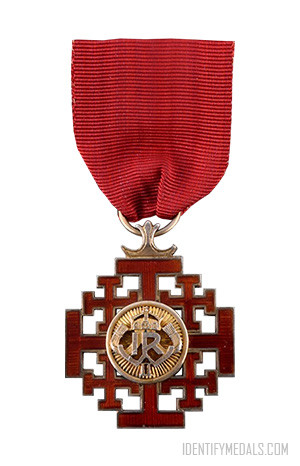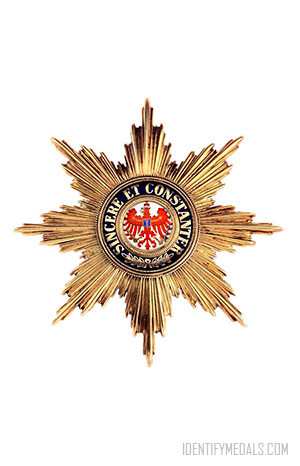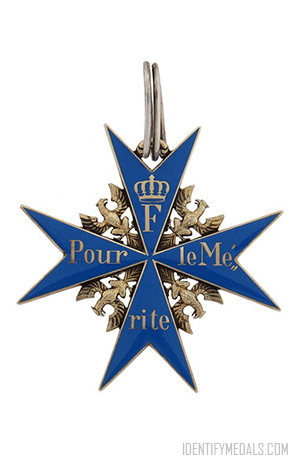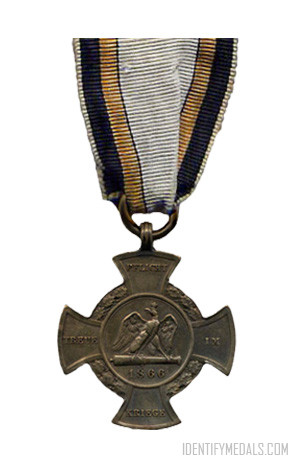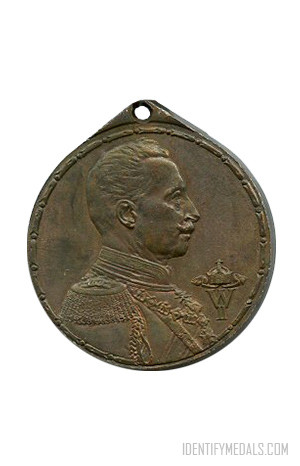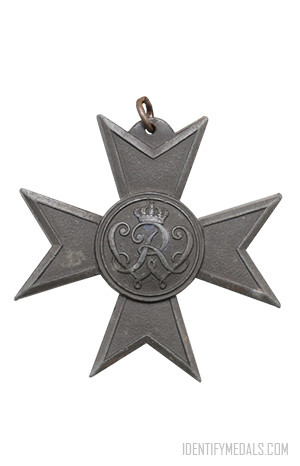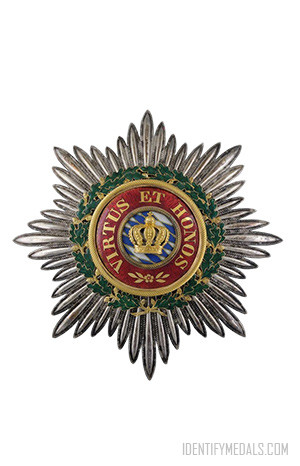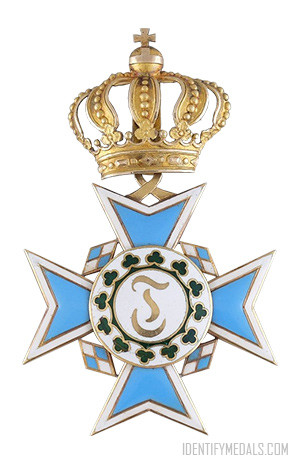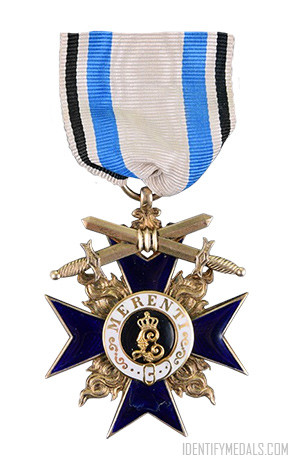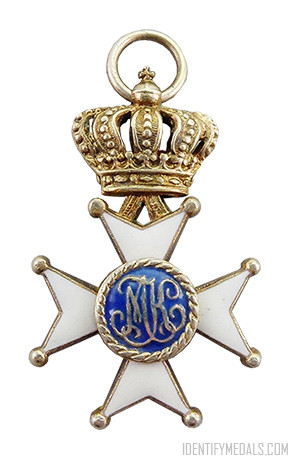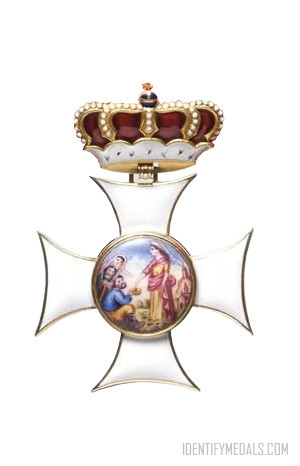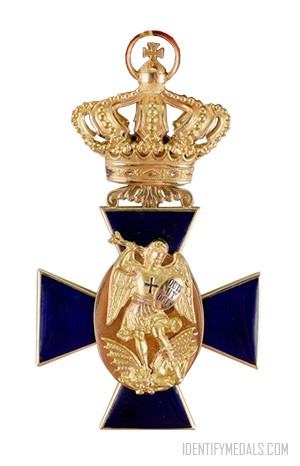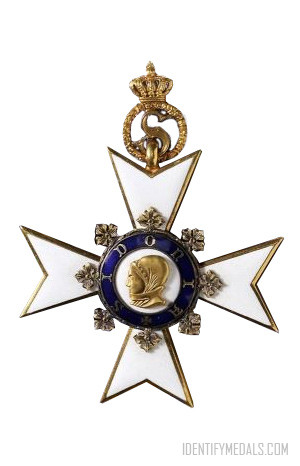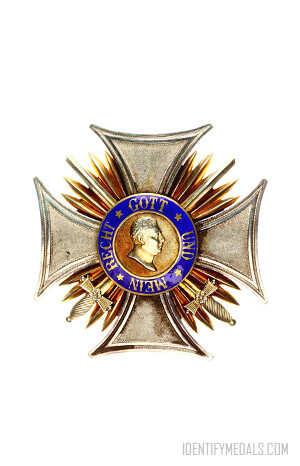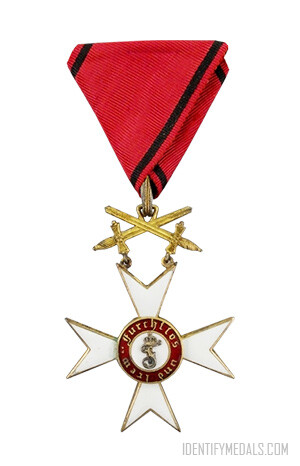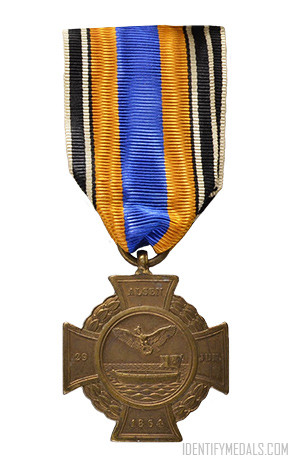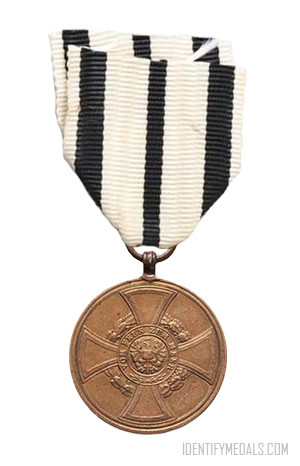Military Medals and Orders from
the Austro-Hungarian Empire
Austro-Hunagarian Badges, Medals & Awards
The Austria-Hungarian Empire was a constitutional monarchy and great power in Central Europe between 1867 and 1918. It was formed by the Austro-Hungarian Compromise on 30 March 1867 in the aftermath of the Austro-Prussian War, and dissolved following its defeat in the First World War. The Austro-Hungarian Empire was ruled by the House of Habsburg and constituted the last phase in the constitutional evolution of the Habsburg Monarchy.
The Austro-Hungarian Empire awarded numerous medals for various reasons, reflecting the diverse nature of its military, civil, and administrative structures. For example, medals were commonly used to recognize valor, merit, and long service among its soldiers and officers and, like other imperial powers of the time, the Austro-Hungarian Empire also utilized medals as tools of propaganda and prestige, both domestically and internationally. Explore all of these decorations and awards below.
Popular Astro-Hungarian
Medals, Orders & Decorations
Explore how the Austro-Hungarian Empire’s extensive use of medals reflected its complex sociopolitical landscape, military traditions, and efforts to maintain cohesion and loyalty within its diverse territories.
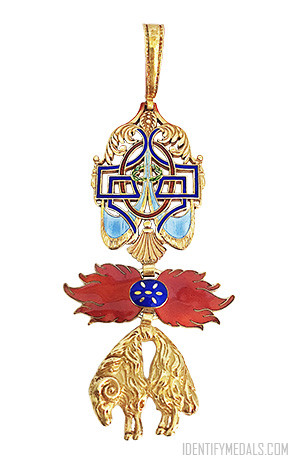
The Insigned Order of the Golden Fleece
The Order of the Golden Fleece is a Roman Catholic Order of chivalry founded by Duke Philip the Good in 1430 to celebrate his marriage.
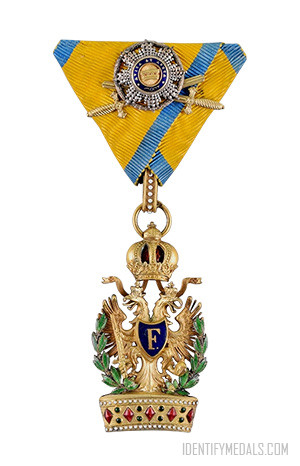
The Order of the Iron Crown (Austria)
The Imperial Order of the Iron Crown was was established in 1815 by Franz I as one of the highest orders of merit of Austria-Hungary.
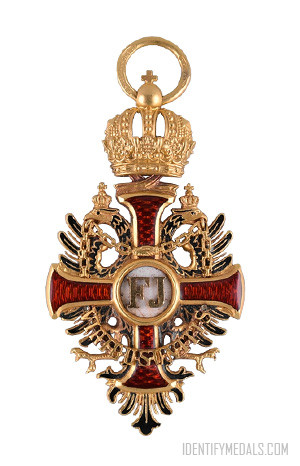
The Order of Franz Joseph
The Imperial Austrian Order of Franz Joseph was founded by Emperor Franz Joseph I on the 1st anniversary of his accession to the throne.
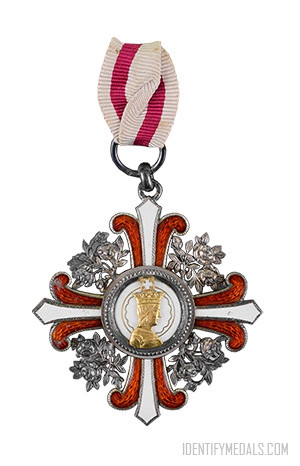
The Imperial Order of Elizabeth (Austria)
The Imperial Austrian Order of Elizabeth was an order created for women in 1898 by Francis Joseph, Emperor of Austria and King of Hungary.
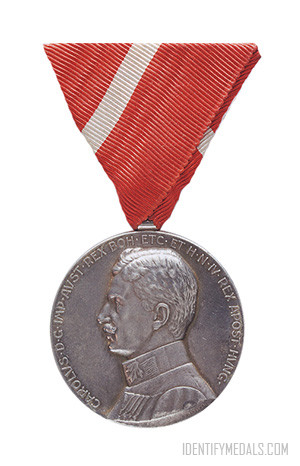
The Civil Merit Medal (Austria-Hungary)
The Civil Merit Medal (Austria-Hungary) is a medal established by Emperor Karl I in 1918 to recognize extraordinary service in war or peace.
Austro-Hungarian Orders
The Austria-Hungarian Empire was a constitutional monarchy and great power in Central Europe between 1867 and 1918. The Empire was ruled by the House of Habsburg and constituted the last phase in the constitutional evolution of the Habsburg Monarchy. Explore awards, badges and medals from the Astro-Hungarian Empire.

The Civil Merit Medal (Austria-Hungary)
The Civil Merit Medal (Austria-Hungary) is a medal established by Emperor Karl I in 1918 to recognize extraordinary service in war or peace.
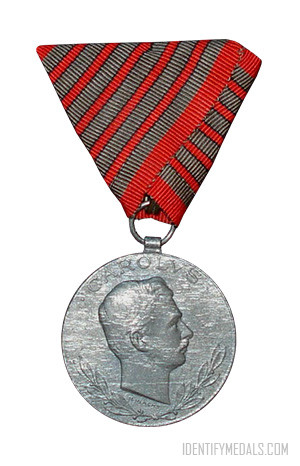
The Wound Medal (Austria-Hungary)
The Wound Medal (Austria-Hungary) a decoration of the Empire of Austria-Hungary established on August 12, 1917 by Emperor Karl I.
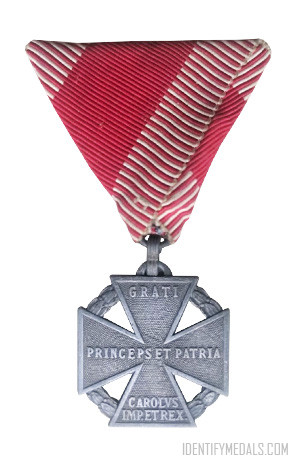
The Karl Troop Cross
The Karl Troop Cross is a medal of Austria-Hungary created on 13 December 1916 and awarded for service up to the end of the First World War.
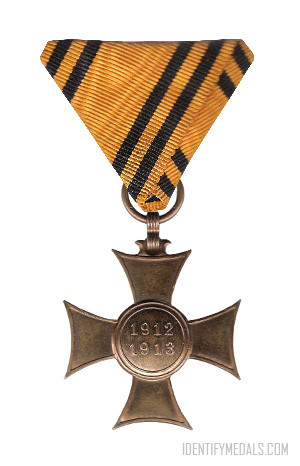
The Mobilization Cross 1912/13
The Mobilization Cross 1912/13 was awarded to military personnel who served with a mobilized unit in response to the Balkan crisis.
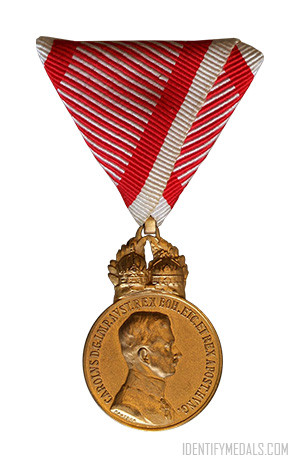
The Military Merit Medal (Austria-Hungary)
The Military Merit Medal is a military decoration of the Empire of Austria-Hungary only awarded to officers and officials of similar rank.
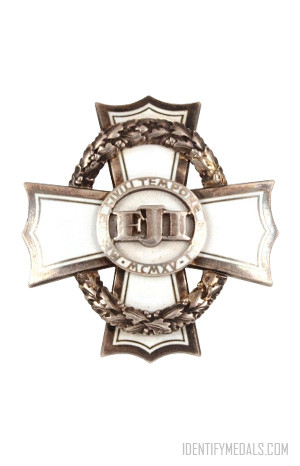
The Civilian Wartime Merit Cross
The War Cross for Civil Merits is a civil award of Austria-Hungary awarded in recognition of civilian war service during World War I.
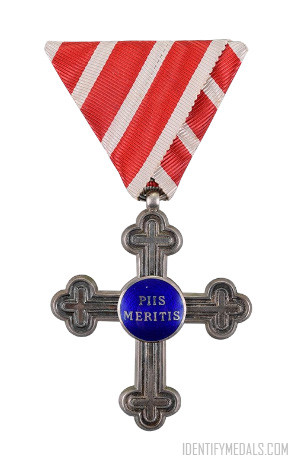
The Merit Cross for Military Chaplains
The Merit Cross for Military Chaplains was awarded to military chaplains for outstanding acts in wartime and meritorious service in peacetime.
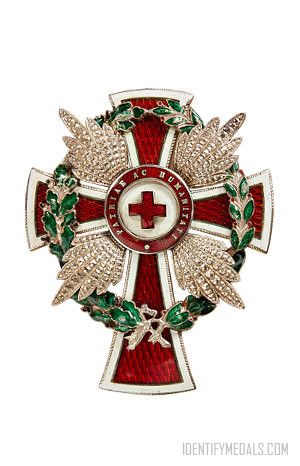
The Austrian Decoration for Services to the Red Cross
The Decoration for Services to the Red Cross was an award instituted in 1914 to mark the 50th anniversary of the Geneva Convention.
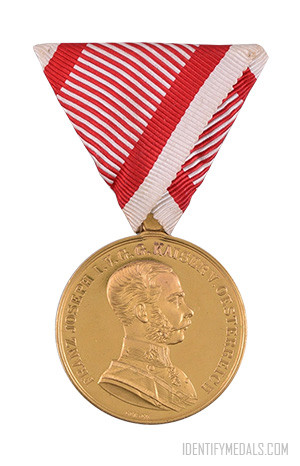
The Medal for Bravery (Austria)
The Medal for Bravery (or Tapferkeitsmedaille in German) was a military decoration of Austria-Hungary established in 1789.

The Imperial Order of Elizabeth (Austria)
The Imperial Austrian Order of Elizabeth was an order created for women in 1898 by Francis Joseph, Emperor of Austria and King of Hungary.
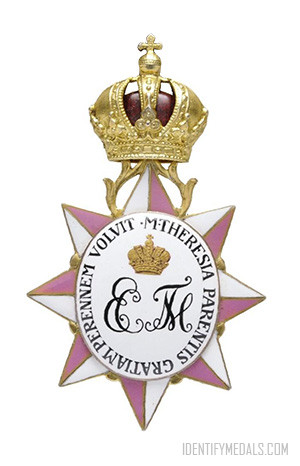
The Imperial Order of Elizabeth and Theresa
The Imperial and Royal Decoration of Elizabeth and Theresa was a decoration of the Austro-Hungarian Empire, created in Vienna in 1750.
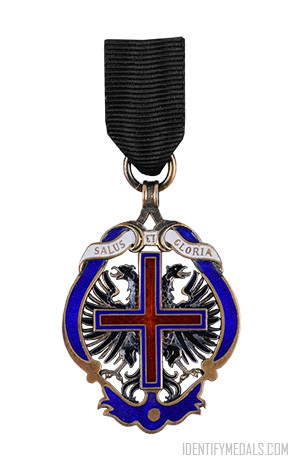
The Order of the Starry Cross
The Order of the Starry Cross (Sternkreuz-Orden) is an imperial Austrian dynastic order founded in 1668 and awarded to Catholic noble ladies.

The Order of Franz Joseph
The Imperial Austrian Order of Franz Joseph was founded by Emperor Franz Joseph I on the 1st anniversary of his accession to the throne.
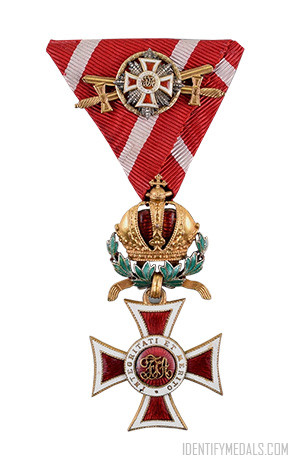
The Austrian Imperial Order of Leopold
The Austrian Imperial Order of Leopold (Österreichisch-kaiserlicher Leopold-Orden) was founded on 8 January 1808 by Franz I of Austria.

The Order of the Iron Crown (Austria)
The Imperial Order of the Iron Crown was was established in 1815 by Franz I as one of the highest orders of merit of Austria-Hungary.
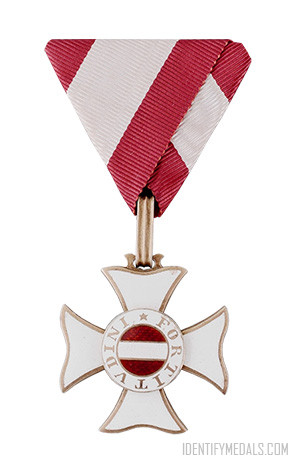
The Military Order of Maria Theresa
The Military Order of Maria Theresa was the highest military honor of the Habsburg Monarchy, Austrian Empire and Austro-Hungarian Empire.
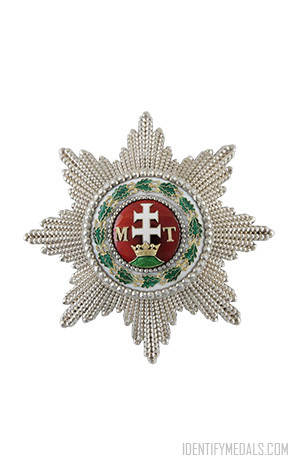
The Royal Hungarian Order of Saint Stephen
The Order of Saint Stephen was an order of knighthood named after Hungary’s most famous king, Stephen I, who reigned between 997 and 1038.

The Insigned Order of the Golden Fleece
The Order of the Golden Fleece is a Roman Catholic Order of chivalry founded by Duke Philip the Good in 1430 to celebrate his marriage.
Medals from the Kingdom of Prussia
The Kingdom of Prussia was a German kingdom that existed between 1701 and 1918 and was the leading state of the German Empire. The kings of Prussia were from the House of Hohenzollern, a German royal dynasty that arose in the area around the town of Hechingen in Swabia during the 11th century. Explore awards, badges and medals from the Kingdom of Prussia.
Medals from the Kingdom of Bavaria
Bavaria was a German state established after 1814 with the Treaty of Paris that continued to exist until 1918. With the unification of Germany into the German Empire in 1871, the kingdom became a federal state of the new Empire and was second in size, power, and wealth to the Kingdom of Prussia. Explore awards, badges and medals from the Kingdom of Bavaria.
More Medals from Germany
In 1871, Germany became a nation-state, and after World War I and the German Revolution of 1918–1919, the Empire was replaced by the Weimar Republic. The Nazi seizure of power in 1933 led to the establishment of a dictatorship. After the end of World War II and the fall of communism and the German reunification, the country became a federal parliamentary republic. Explore German awards, badges and medals.

